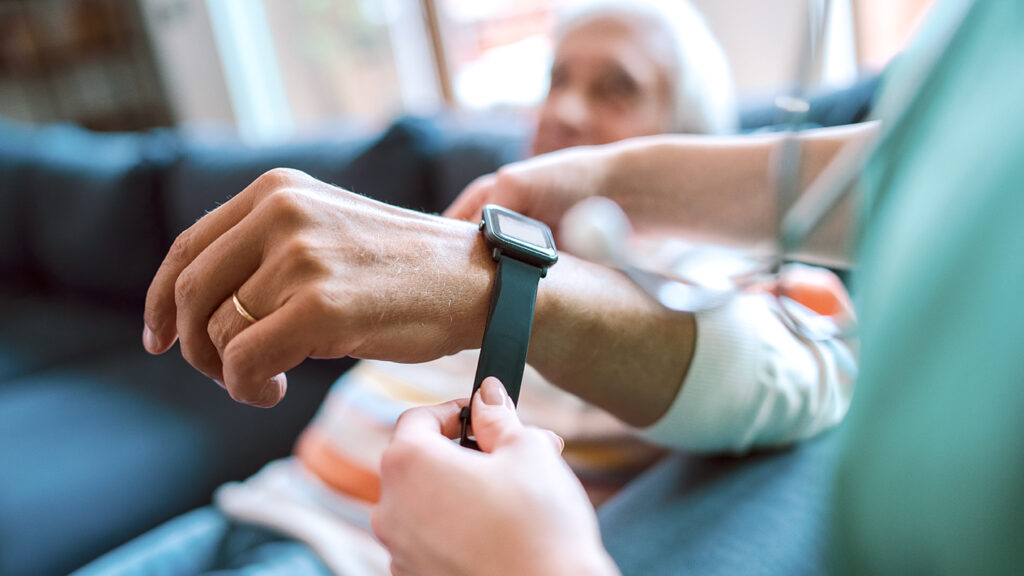
A new wearable device can help provide more insight on when people living with Parkinson’s experience tremors and episodes of uncontrolled motor function, according to new study results.
The latter condition, known as dyskinesia, is a major problem for some people during periods between medication doses.
With approximately one fourth of people with Parkinson’s living in assisted living communities and nursing homes, managing those episodes is very important to residents’ quality of life. There are now approximately 90,000 new cases a year in the United States.
Better tracking of the severity and timing of Parkinson’s complications is necessary not only to offer better treatment options, including switching medication or dosages, but also for future research into new treatment possibilities.
To that end, certain commercial, wrist-worn wearables show “moderate validity” in being able to track symptom fluctuations, the new study indicates.
Currently, devices such as the Parkinson KinetiGraph aggregate data on a day-to-day basis.
The researchers shortened the intervals for data collection to 30-minute intervals, a function that is not available for most commercial devices, one story notes.
Data captured by the wearables was compared with anecdotal records from both patients and clinicians and showed a match of 40% and 55% of the time, respectively, with those cohorts.
Ironically, the wearables appeared to better monitor the “off” periods in between medication, or when symptoms were most severe, and were less reliable for monitoring symptoms when study participants were not experiencing symptoms or were fully medicated.
“A single assessment fails to capture the presence, timing or severity of these [symptom] fluctuations, and so continuous assessment is required,” the study authors concluded. “Our data suggest that the combination of frequent virtual examination and passive monitoring of motor function might potentially help to increase validity of digital health technologies in detecting motor fluctuations.”
In addition to data trackers, other wearables on the market for people living with Parkinson’s aim to more directly address their symptoms. The Cala kIQ System is a wrist-worn wearable that helps diagnose hand tremors and recommend treatment options.


